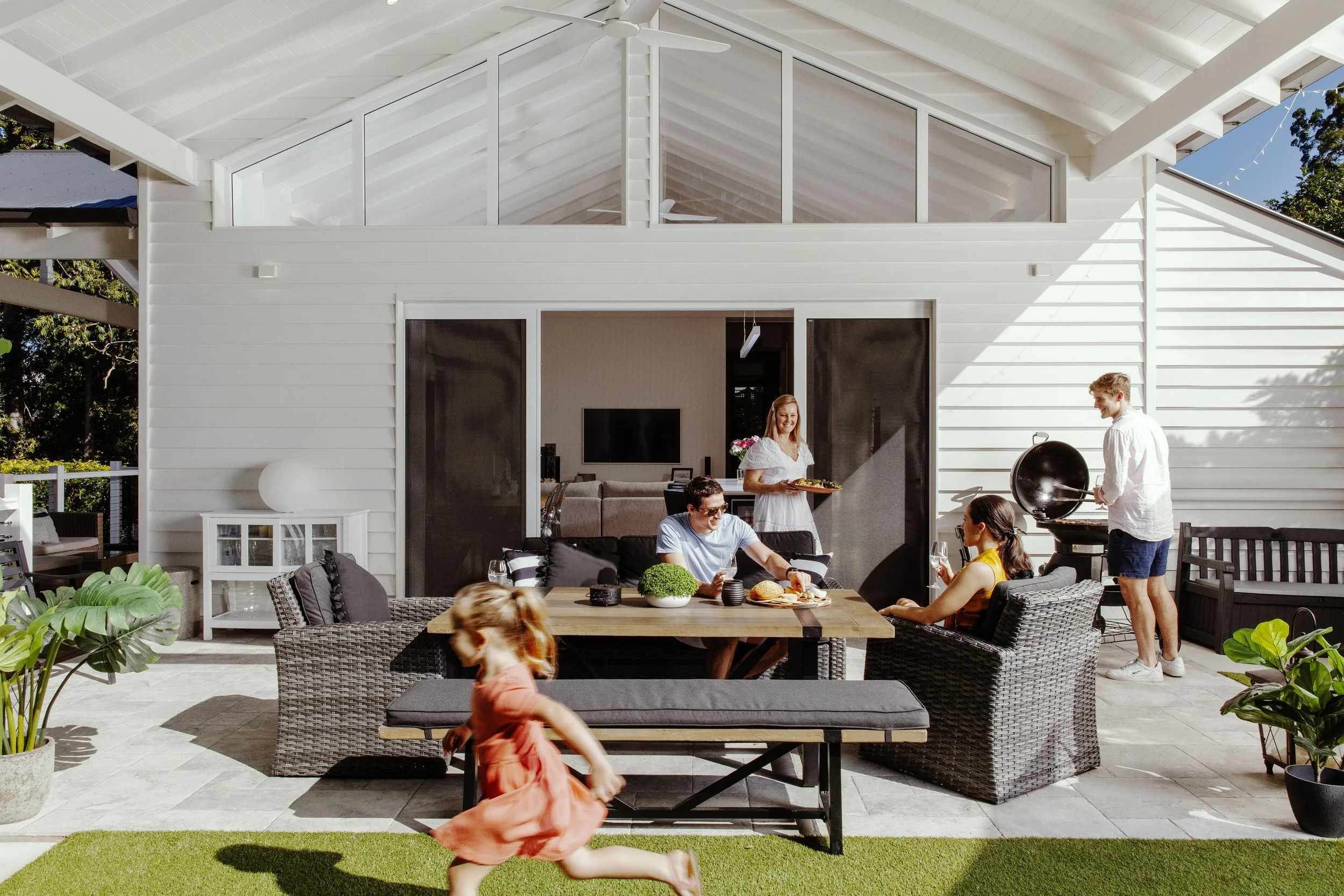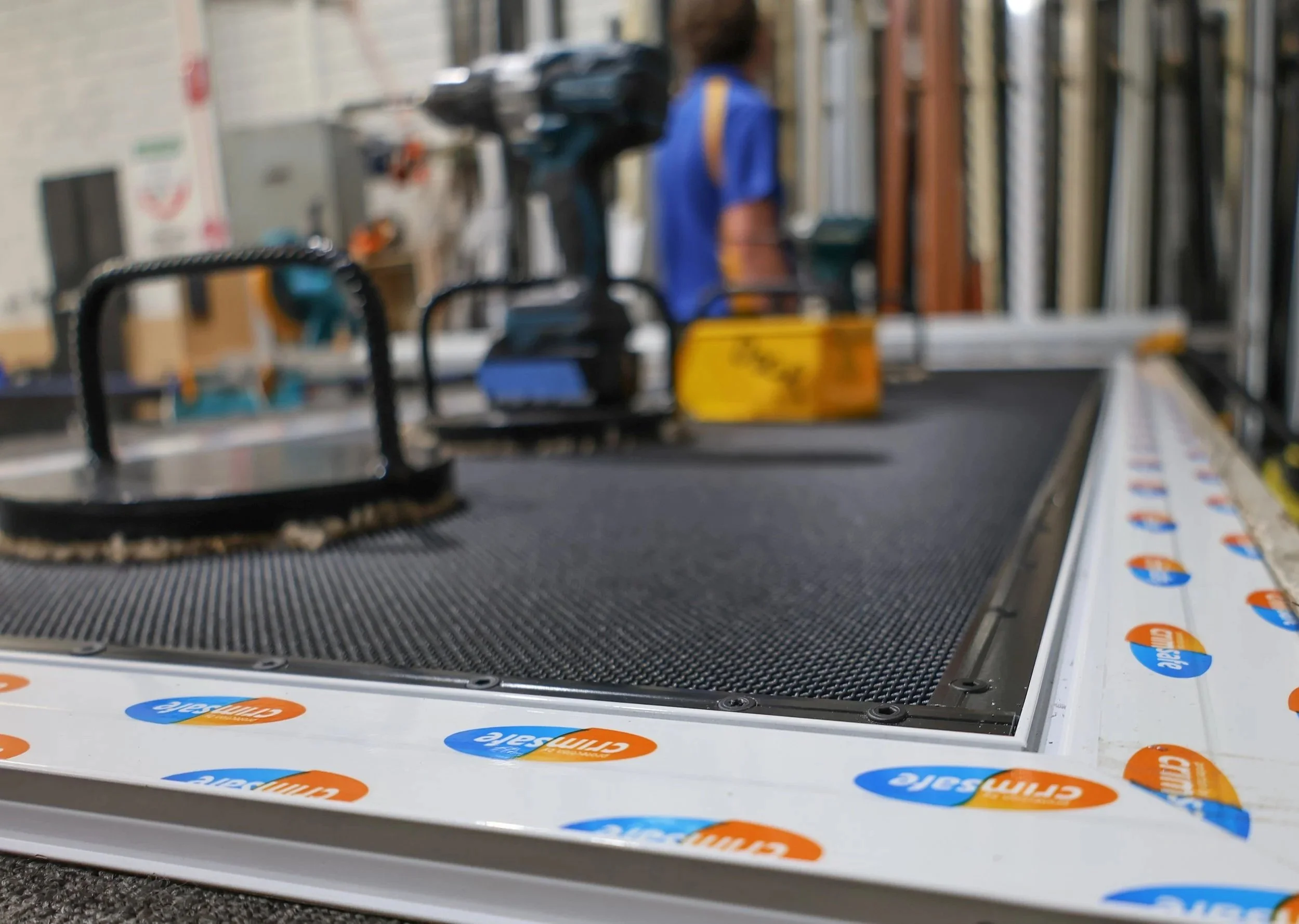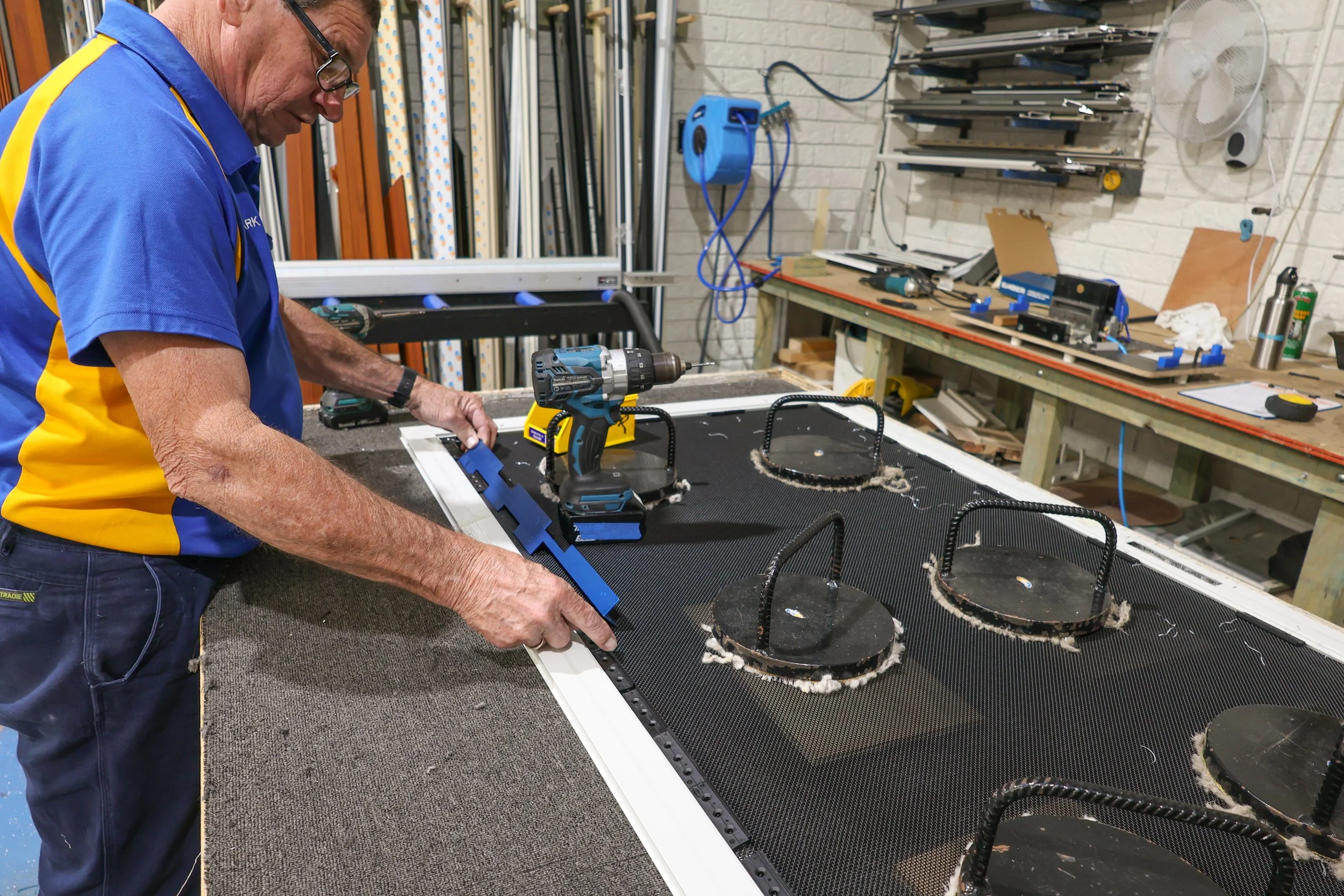
Your Guide to Lifestyle Living
Working Safe: Why Workplace Health and Safety Matters in Every Project
At Port Patios, safety isn’t just a box to tick it’s part of how we build. Whether we’re installing patios, pergolas, or carports, maintaining workplace health and safety (WHS) standards protects our team, our clients, and the quality of every job we deliver.
Safe Work Starts with Preparation
Before every project begins, our team ensures all tools and electrical equipment are tested, tagged, and maintained to meet Australian safety standards. From drills and chargers to extension cords, keeping gear in top condition reduces risk and prevents avoidable incidents on site.
Creating a Safe Site
Our safety practices go beyond electrical compliance. Every installation site is checked for:
Trip and fall hazards – keeping work zones tidy and cords secured
Weather risks – scheduling around high winds or storms
Protective equipment – ensuring all staff wear PPE suited to the task
Clear communication – toolbox talks before work begins
By following these principles, we make sure each project runs smoothly and safely.
The Importance of Electrical Tagging
Regular electrical testing and tagging is a simple but crucial part of WHS compliance. Under NSW workplace regulations, portable electrical equipment must be inspected at regular intervals to confirm it’s safe to use.
Faulty leads, damaged plugs, or moisture affected tools can pose serious risks, testing eliminates those hazards before they happen.
A big thank you to Port Sparky for ensuring that all our equipment meets Australian safety standards, so our team can focus on what we do best.
Safe Practices Protect Everyone
At Port Patios, we take workplace health and safety in Port Macquarie seriously, ensuring every project meets WHS compliance standards across NSW. Our team follows safe work practices supported by regular electrical testing and tagging carried out by Port Sparky. From maintaining a thorough tool inspection checklist to upholding construction site safety and compliant building practices in NSW, we’re committed to protecting our workers, clients, and community through every stage of the job.
At the end of the day, safety isn’t about ticking off paperwork it’s about people.
By investing in regular equipment testing, PPE and site planning Port Patios continues to build safely, efficiently, and responsibly across the Mid North Coast.
Carport Compliance in NSW: Everything You Need to Know
Adding a carport is a smart way to protect your vehicles from sun, rain and salt spray, but in New South Wales (NSW) you can’t just start building. Whether you’re considering a freestanding carport or an integrated patio carport design, it’s important to understand council approvals, building codes and legal requirements before you break ground.
1. Do You Need Council Approval?
A quick checklist of key NSW carport compliance factors
Not every carport requires a Development Application (DA). In many cases, you may be able to build under Complying Development which is a fast track approval pathway if your project meets the NSW Housing Code standards. Key factors include:
Size and Height: Under 3 m high and within specified floor area limits.
Setbacks: Minimum distance from boundaries and street frontages.
Materials and Design: Must meet local zoning and bushfire regulations.
If you’re unsure, always check with your local council.
2. Understanding Building Standards
Coastal style compliant carport in Port Macquarie built to NSW standards with aluminium framing and weather proof finishes.
Even if your project qualifies as exempt or complying development, your carport must also meet the Building Code of Australia (BCA) and relevant Australian Standards for structural integrity and wind loads. On the Mid North Coast, coastal winds and salt exposure make quality materials like galvanized steel or powder coated aluminium essential.
3. Site Considerations and Utilities
Before construction, locate underground services such as water, gas and electrical lines. Ensure adequate drainage so stormwater flows away from both the carport and your home’s foundations.
4. Bushfire and Coastal Conditions
Many properties in Port Macquarie and surrounds fall into Bushfire Attack Level (BAL) zones. Your carport design may need fire resistant materials or specific setbacks. Coastal properties also face salt corrosion, choose finishes designed for corrosive marine environments.
Carport built for Port Macquarie’s bushfire and coastal conditions using durable, fire resistant materials.
5. Why Work With Licensed Professionals?
From initial design to final inspection, licensed builders and experienced patio specialists ensure your carport:
Meets NSW planning rules and BCA requirements
Uses materials suited to local conditions
Passes council or private certifier inspections
Working with a trusted local team saves time, reduces risk and ensures a polished result.
Compliance Snapshot: NSW Rules at a Glance
Compliance at a Glance (NSW Governement - Carports and Garages)
Exempt Development – No DA or CDC Needed
You can build a carport without formal approval if it meets all of the following:
Floor area:
≤ 20 m² on lots ≤ 300 m²
≤ 25 m² on larger lots in most zones
≤ 50 m² in rural zones or R5 residential
Height: ≤ 3 m above ground (and not above gutter line of a single story dwelling).
Structure: At least two sides and one third of the perimeter open.
Setbacks:
≥ 1 m behind the building line facing any road.
≥ 900 mm from side/rear boundaries in most zones (≥ 5 m in rural zones).
Other requirements:
Non combustible materials if within 5 m of a dwelling on bushfire-prone land.
Roof water connected to existing stormwater drainage.
Metal materials must be low reflective powder coated or pre-finished steel finishes.
Maximum one carport per dwelling (two if there is both a primary and secondary dwelling).
Complying Development – Fast-Track Approval (CDC)
If you don’t qualify for exempt development, you may still use a Complying Development Certificate if:
Lot is zoned R1–R4, RU5 or R5 and at least 200 m² with a minimum 6 m width.
Detached carports/garages are ≤ 4.5 m high.
Vehicle access from the primary road frontage is set back at least 5.5 m or 1 m behind the building line.
Total width of garage door openings facing a road is limited (max 3.2 m on lots 8–12 m wide; max 6 m on lots > 12 m).
Always confirm details in the State Environmental Planning Policy (Exempt and Complying Development Codes) 2008 and seek professional advice if your property is in a heritage or foreshore area.
Frequently Asked Questions
Do all carports need a DA?
No. If your carport meets the NSW Exempt or Complying Development criteria, you may avoid a full Development Application.
Why does my neighbour have a carport in front of their building line?
It’s quite common to notice older homes with carports built closer to the street than current regulations allow. In most cases, these structures were approved before the latest NSW planning rules came into effect, meaning they were compliant at the time of construction and are considered lawfully existing or “grandfathered”. While they may not meet today’s setback requirements, they can remain in place because the legislation does not apply retrospectively.
What is the maximum height for a carport without DA?
3m, provided it does not exceed the gutter line of a single story dwelling.
Can a carport be built on the boundary?
Only if it meets the required side and rear setback rules and any fire rating requirements.
How long does approval take?
Complying Development Certificates can be issued in as little as 20 days if all documentation is complete.
Build Smart and Stay Compliant
When planning a new carport in NSW especially around Port Macquarie it pays to understand council approvals, carport building standards, and the NSW Housing Code before construction begins. By working with licensed builders who specialise in patio and carport compliance in Port Macquarie, you’ll ensure your carport installation meets NSW council requirements, is built to withstand coastal weather and bushfire zones, and delivers long term value. Whether you need a custom aluminium carport, a compliant carport for a coastal home, or a certified patio-carport combination, choosing a local expert like Port Patios means peace of mind from planning to completion.
5 Things to Know Before Choosing Security Screens
Feeling Secure
Home should be the place you feel safest. It’s where you relax, open the windows for a breeze, and enjoy time with family. But feeling secure is about more than locks and alarms, it’s about knowing your doors and windows are built to protect you without taking away comfort.
That’s where genuine security screens come in.
Strong, safe, and stylish security screens let you enjoy life’s moments with peace of mind.
Peace of Mind and Comfort
A proper security screen does more than keep intruders out. It lets you:
Sleep with fresh air flowing on summer nights
Leave a door open while cooking
Relax knowing kids or grandkids can play freely
It’s about creating peace of mind while still enjoying the lifestyle we love here on the Mid North Coast.
What Sets a Security Screen Apart
Not all screens are created equal. In Australia, products must meet AS5039 (construction) and AS5040 (installation) standards to be classed as security screens.
Here’s what to look for:
Structural-Grade Mesh – 304 grade woven stainless steel designed to resist cutting, pulling, and impact.
Rust Resistance – Aluminium frames with anti galvanic coatings, and powder finishes for coastal durability.
Locks & Hinges – 3-point locking systems, anti jimmy hinges, and deadlock options.
Professional Installation – screens anchored correctly by licensed installers to perform as intended.
Strength you can trust: structural grade mesh fixed to a rust resistant aluminium frame.
The Process You Should Expect
Every doorway and window is different, so a proper process is essential:
Quotation – On site measure by a licensed professional. In NSW, both quoting and installing require a Security Industry License.
Fabrication – Screens custom built to fit your home, ideally manufactured locally to suit our climate.
Installation – Proper anchoring, alignment, and finishing by experienced installers.
Hand built with care to match your home seamlessly.
Why the Right Business Matters
When comparing providers, look for:
Licensed staff for both quoting and installation
Locally manufactured products for quality and durability
A showroom where you can see and test the screens in person
Being able to step into a showroom has real benefits. You can feel the strength of the mesh, see how locks work, and ask practical questions before making a decision.
5 Things to Check Before Buying a Security Screen
Security License – Ensure the person quoting and installing is licensed.
Australian Standards – Look for compliance with AS5039 and AS5040.
Structural Mesh – High tensile stainless steel that resists cutting and impact.
Rust Resistance – Anti galvanic coatings, and powder coated finishes.
Local Manufacturing & Showroom – Support local, and see the product before you buy.
Frequently Asked Questions
What’s the difference between a flyscreen and a security screen?
A flyscreen is designed to keep out insects but offers little to no protection against impact or intrusion. A genuine security screen is built to Australian Standards with structural grade mesh, reinforced frames, and secure locking systems.
Do I really need a licensed installer?
Yes. In NSW, security screens must be quoted and installed by someone with a Security Industry License. This ensures the product is fitted correctly and legally.
How long do security screens last?
Quality security screens can last 10+ years especially those made with frames made from Aluminium with anti galvanic coatings and powder coated finishes. With proper care, they can withstand coastal conditions like Port Macquarie’s.
Will security screens block my view or airflow?
No. High quality woven stainless steel mesh maintains airflow and visibility, so you can still enjoy fresh breezes and natural light while staying protected.
Why choose locally manufactured screens?
Local manufacturing ensures screens are built for Australian conditions, reduces wait times, supports local jobs, and allows you to see the product in a showroom before installation.
What is the bushfire rating of your security screens?
Our Crimsafe products, when installed with compliant window systems, are rated for the highest Bushfire Attack Level (BAL)—BAL-FZ (Flame Zone) under the Australian Standard AS3959. This means they are designed to protect homes in the most extreme bushfire prone areas.
When it comes to choosing security screens in Port Macquarie, it’s worth understanding the real benefits of security screens and what sets them apart. From structural mesh security doors that resist impact to professional security screen installation in Port Macquarie carried out by licensed experts (meeting Security License NSW requirements), the right choice makes all the difference. By working with local security screen manufacturers, you’ll get tailored patio and home security solutions that suit our climate, including rust-resistant security screens designed to last. For peace of mind, comfort, and durability, it pays to choose the best security screens for coastal homes.








